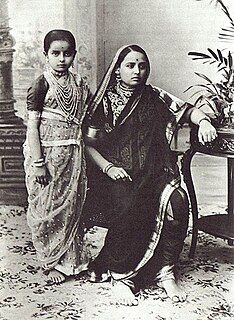 W
WA sari is a women's garment from the Indian subcontinent that consists of an unstitched drape varying from 4.5 to 9 metres in length and 600 to 1,200 millimetres in breadth that is typically wrapped around the waist, with one end draped over the shoulder, partly baring the midriff. It is traditionally worn in the countries of India, Pakistan, Bangladesh, Sri Lanka and Nepal. There are various styles of sari manufacture and draping, the most common being the Nivi style The sari is worn with a fitted bodice commonly called a choli and a petticoat called ghagra, parkar, or ul-pavadai. In the modern Indian subcontinent, the sari is considered a cultural icon.
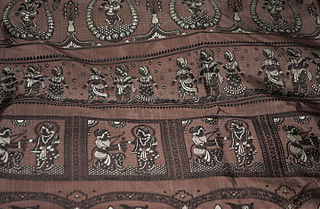 W
WBaluchari Sari is a type of sari, a garment worn by women in West Bengal and Bangladesh. This particular type of sari originated in West Bengal and is known for depictions of mythological scenes on the pallu of the sari. It used to be produced in Murshidabad but presently Bishnupur and its surrounding areas of West Bengal are the only place where authentic Baluchari saris are produced. It takes approximately one week to produce one such sari. In 2011, the Baluchari Sari was granted the status of Geographical Indication for West Bengal in India.
 W
WA Banarasi sari is a sari made in Varanasi, an ancient city which is also called Benares (Banaras). The saris are among the finest saris in India and are known for their gold and silver brocade or zari, fine silk and opulent embroidery. The saris are made of finely woven silk and are decorated with intricate design, and, because of these engravings, are relatively heavy.
 W
WChanderi sari is a traditional sari made in Chanderi, Madhya Pradesh, India.
 W
WA choli is a blouse or a bodice-like upper garment that is commonly cut short leaving the midriff bare, it is worn along with a sari in the Indian subcontinent. The choli is also part of the ghagra choli costume in the Indian subcontinent.
 W
WGagra choli or ghagra choli, which is also known as lehenga choli and locally as chaniya choli, is the traditional clothing of women from Indian Subcontinent, notable in Indian states of Rajasthan, Gujarat, Madhya Pradesh, Uttar Pradesh, Bihar, Haryana, Punjab, Himachal Pradesh, Uttarakhand, Jammu and Kashmir, as well as in Nepal. In Punjab it was traditionally worn with the kurti and salwar. It is a combination of the gagra or lehenga and the choli (blouse), however in contemporary and modern usage lehenga choli is the more popular and widely accepted term by fashion designers, trend setters, and boutiques in South Asia, since ghagra is synonymous with the half-slip worn as an undergarment below the sari.
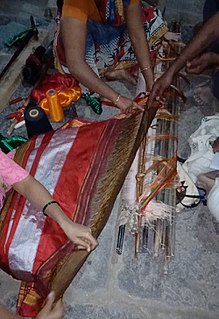 W
WIlkal sari is a traditional form of sari which is a common feminine wear in India. Ilkal sari takes its name from the town of Ilkal in the Bagalkot district of Karnataka state, India. Ilkal saris are woven using cotton warp on the body and art silk warp for border and art silk warp for pallu portion of the sari. In some cases instead of art silk, pure silk is also used. Ilkal sari has been accorded geographical indication (GI) tag. Its GI tag number is 76.
 W
WJamdani is a fine muslin textile produced for centuries in South Rupshi of Narayanganj district in Bangladesh on the bank of Shitalakhwa river. The historic production of jamdani was patronized by imperial warrants of the Mughal emperors. Under British colonialism, the Bengali jamdani and muslin industries rapidly declined due to colonial import policies favoring industrially manufactured textiles. In more recent years, the production of jamdani has witnessed a revival in Bangladesh. Jamdani is typically woven using a mixture of cotton and gold thread.
 W
WThe Kanchipuram silk sari is a type of silk sari made in the Kanchipuram region in Tamil Nadu, India. These saris are worn as bridal & special occasion saris by most women in Tamil Nadu, Karnataka & Andhra Pradesh. It has been recognized as a Geographical indication by the Government of India in 2005–2006.
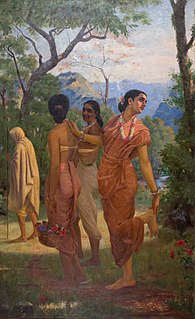 W
WThe Kaashtha sari is a style of sari draping is very similar to the way the Maharashtrian dhoti is worn. The word Kaashtha refers to the sari being tucked at the back. Since this sari is usually worn by using a single nine yard cloth, it is also referred to as Nauvari which means Nine Yards. Sakachcha sari is another term commonly used to refer to this style of sari. It is referred to as Akanda Vastra, which means it doesn't need any other attire to support it. In fact, this attire holds utmost importance as women across different walks of life have worn it. It is not just worn at religious and cultural events, but women have fought wars in the past and still work in farmlands wearing this.
 W
WKerala sari (Set-sari) is a clothing of women in the Indian state of Kerala.
 W
WKota Doria or Kota Doriya is the name of a light weight fabric made of tiny woven squares (khat) which is still hand woven on traditional pit looms in Kaithoon near Kota in Rajasthan and in some of the surrounding villages. Kota Doriya Sarees are made of pure cotton and silk and have square like patterns known as khats on them. The chequered weave of a Kota sari is very popular. They are very fine weaves and weigh very less.
 W
WA langa voni is a traditional dress worn mainly in South India by young girls between puberty and marriage. It is also known as the two-piece sari or half sari. Young girls between puberty and marriage wear this dress. Girls younger than this may wear it on special occasions.
 W
WA lehenga-style sari is a modern garment introduced in India that blends elements of the traditional sari and lehenga choli. A lehenga-style sari is normally 4.5 metres to 5.5 metres long. To wear one, unlike a sari, one does not have to form pleats but may simply tuck and drape.
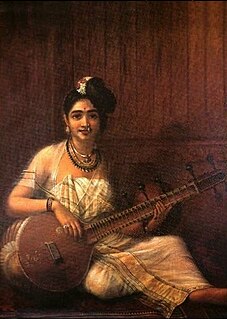 W
WMundum neriyathum is the traditional clothing of women in Kerala, a state in southwestern India. It is the oldest remnant of the ancient form of the saree which covered only the lower part of the body. In the mundum neriyathum, the most basic traditional piece is the mundu or lower garment which is the ancient form of the saree denoted in Malayalam as 'Thuni', while the neriyathu forms the upper garment the mundu. The mundum neryathum consists of two pieces of cloth, and could be worn in either the traditional style with the neriyathu tucked inside the blouse, or in the modern style with the neriyathu worn over the left shoulder.
 W
WPaithani (Marathi:पैठणी) is a variety of sari, named after the Paithan town in Aurangabad from state of Maharashtra where the saree was first made by hand. Present day Yeola town in Nashik, Maharashtra is the largest manufacturer of Paithani.
 W
WPasapali sari is a handloom sari weaved mainly in the Bargarh district of Odisha, India. The name Pasapali is derived from pasā or gambling games using Chess board. These saris have intricate check patterns of contrast colors resembling the chess boards which gives it such name.
 W
WPatola is a double ikat woven sari, usually made from silk, made in Patan, Gujarat, India. The word patola is the plural form; the singular is patolu. They are very expensive, once worn only by those belonging to royal and aristocratic families. These saris are popular among those who can afford the high prices. Velvet patola styles are also made in Surat. Patola-weaving is a closely guarded family tradition. There are three families in Patan that weave these highly prized double ikat saris. It is said that this technique is taught to no one in the family, but only to the sons. It can take six months to one year to make one sari due to the long process of dying each strand separately before weaving them together. Patola was woven in Surat, Ahmedabad and Patan. Highly valued in Indonesia, became part of the local weaving tradition there.
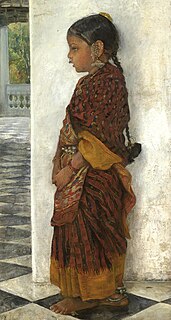 W
WPochampally sari or Pochampalli ikat is a saree made in Bhoodan Pochampally, Yadadri Bhuvanagiri district, Telangana State, India. They have traditional geometric patterns in Ikat style of dyeing. The intricate geometric designs find their way into sarees and dress materials. The Indian government's official airplane company, Air India, has its cabin crew wear specially designed Pochampally silk sarees.
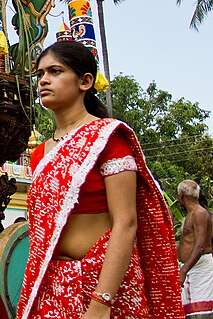 W
WSari cancer is a type of skin cancer that occurs along the waistline in females wearing the sari, caused by constant irritation which can result in scaling and changes in pigmentation of the skin. It is a rare type of cancer and generally found in the Indian subcontinent, where saris are commonly worn by girls and women throughout their lives. It is similar to Marjolin's ulcer in cause, involving chronic inflammation.
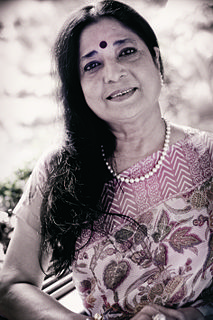 W
WKalpana Shah is an Indian sari draper, stylist, author, and entrepreneur. She resides at Altamount Road, Mumbai, India. She has practiced the art of sari draping since 1985. She gives sari draping lessons and workshops and drapes saris for formal events.
 W
WA Shalu is a regional variant of the sari from Banaras (Varanasi), India. It is one of many types of saris and differs in the fact that it is the end result of combining Paithani fabric and Banarasi fabric. Paithani, named after the Paithan town in Aurangabad Maharashtra, is made from very fine silk and is characterized by borders of an oblique square design, and a pallu with a Peacock design. Banarasi, also known as Banarasi Silk, is a fine variant of Silk that originates from the city of Varanasi in Uttar Pradesh, India. One of the biggest differences with the Shalu Sari, in comparison to others, is that it is completely embellished at the base with what is called "jari" motifs.
 W
WTant sari is a traditional Bengali sari, originating from the Bengal region in the eastern part of the Indian subcontinent, and usually used by Bengali women. It is traditionally made by the weavers from almost all over Bangladesh and the Indian states of West Bengal, Tripura, and Assam's Barak Valley, but typically few places like Dhaka, Tangail, Narayanganj of Bangladesh and Murshidabad, Nadia, Hooghly of West Bengal are famous for tant sari weaving. Tant sari are woven from cotton threads and distinguished by its lightness and transparency. It is considered to be the most comfortable sari for the hot and humid climate in the Indian subcontinent.
 W
WA wedding sari is the traditional wedding dress of South Asian women. The sari is traditionally a combination of red and green, with golden brocade. In contrast, Christians in India, traditionally wear white/cream saris with gold brocade.
 W
W